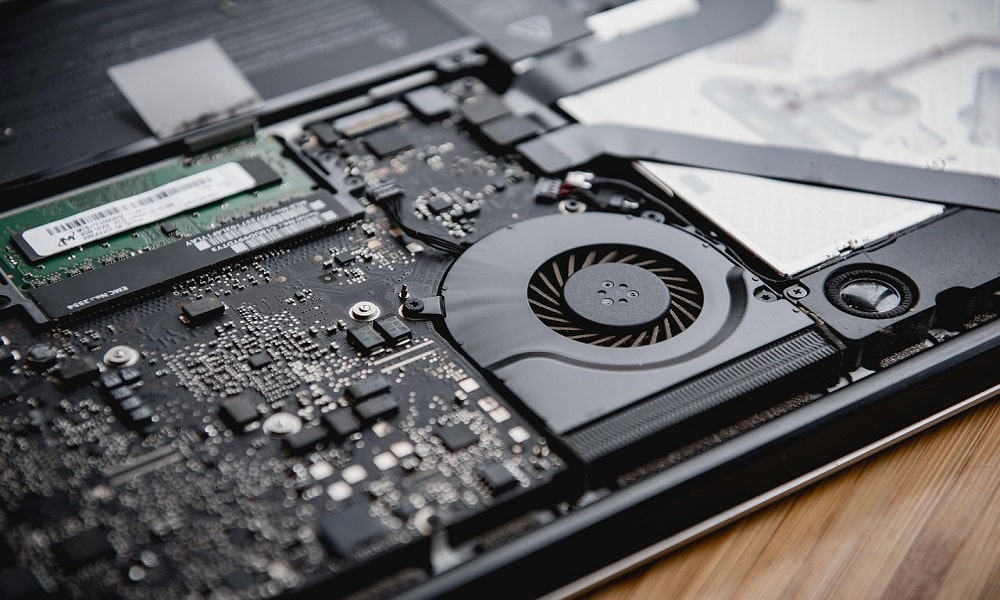If your laptop sounds quiet and its fan is barely humming, it’s easy to assume everything is fine under the hood. But just because your device isn’t overheating or blaring like a jet engine doesn’t mean it’s truly at rest. Modern laptops—especially those with solid-state drives and efficient cooling systems—are experts at masking internal stress. In many cases, your fan’s silence is a lie, and it could be hiding a surprising amount of unseen computational strain.
Modern Processors, Silent Workers
Thanks to the multi-core design of modern CPUs, as well as low-power states and dynamic frequency scaling, a lot of background processing is going on without you even noticing. This includes things like indexing files, syncing data, scanning memory, and updating services — all of which are done while the laptop’s fan is running at a normal speed.
The operating system has a lot to do with how your computer’s fans behave. In macOS and Windows, tasks are often performed during the idle time between keystrokes – when you’re typing a document, or while you’re browsing the web.
The Hidden Cost of Convenience
Many background tasks come from legitimate sources: cloud sync clients, AI-based suggestion tools, telemetry reporters, and browser-based utilities. Each one claims a small slice of your CPU cycles, memory, and disk throughput. Individually, they’re benign. Collectively, they build silent strain.
For instance, Chrome extensions can run isolated scripts to monitor browsing behavior. Auto-updaters from messaging apps like Slack or Discord run persistent background daemons. Your antivirus software, ironically, is likely one of the most consistently active background services, silently scanning your files and behavior.
And then there are the unknowns.
At any given moment, dozens of processes may be running with administrative privileges, doing tasks you didn’t explicitly request. While most are harmless, it only takes one rogue element—say, a low-footprint keylogger bundled with freeware—to introduce serious privacy and performance risks, all without ever triggering your fan. This is why it’s crucial to routinely audit your system and find ways to tell if there are keylogger threats before they become invisible liabilities.
The Fan Isn’t a Health Meter
It’s a mistake to think of fan noise as a real-time measure of system health. Thermal management systems are reactive, not proactive. By the time the fan activates, the CPU is already dealing with heat build-up. Worse, some modern systems throttle performance to avoid fan activation altogether—especially ultraportable laptops and tablets.
This is particularly deceptive on newer ultrabooks, which prioritize quiet operation and battery life over thermal transparency. The system could be running numerous scripts, updating packages, compiling logs, or encrypting data—all while staying within “safe” thermal limits. So the fan doesn’t spin up, and the user assumes everything is fine.
Diagnostic Tools and What They Miss
Many users turn to Activity Monitor or Task Manager to spot unwanted strain. But these tools often hide kernel-level processes or system daemons that don’t report accurate CPU usage. In addition, malware authors are increasingly adept at designing background tasks that “sleep” periodically to avoid detection and throttle their activity to mimic low-priority system tasks.
Even more obscure: some background processes use GPU acceleration or Direct Memory Access (DMA), which aren’t always captured by standard monitoring tools. These can include analytics trackers, remote access agents, or encrypted sync services.
Unless you dig into system logs, analyze startup items, or inspect thread-level behavior, you may never know what’s silently working in the background.
How to Identify Silent Strain
If you suspect your laptop is working harder than it lets on, here are a few advanced diagnostics to try:
- You can use power usage monitors like Intel Power Gadget or powertop (for Linux) to see how much power your laptop is using. These tools will show you even when the fan is not running and everything seems quiet.
- Check disk activity. A silent drive doesn’t mean it’s idle. You can see what’s causing high I/O with Resource Monitor.
- Check for suspicious startup entries using Autoruns if you are on a Windows or KnockKnock if you are on a macOS.
- Analyze temperature spread. Even with low fan output, CPU package temperatures may spike under strain. Compare idle temps over time.
The key isn’t just looking at noise—but at behavior patterns, energy usage, and entropy within the system.
Conclusion: Silence Isn’t Security
A silent laptop makes you feel more in control, like you can work more efficiently and safely. But with all the software running in the background on modern computers, that’s just not true. If you think your laptop fan kicking in means something is “wrong,” you’re sadly mistaken. Whether you’re concerned about malware or your battery running out of juice too quickly, don’t assume everything is fine just because it’s quiet.
Instead, think like a forensic analyst. Question what’s running when nothing should be. Monitor changes over time. And remember: some of the most invasive threats—whether performance-sapping scripts or privacy-compromising tools—are built to remain invisible, inaudible, and unnoticed.
Because sometimes, the quietest laptop is the one working hardest against your interests.


